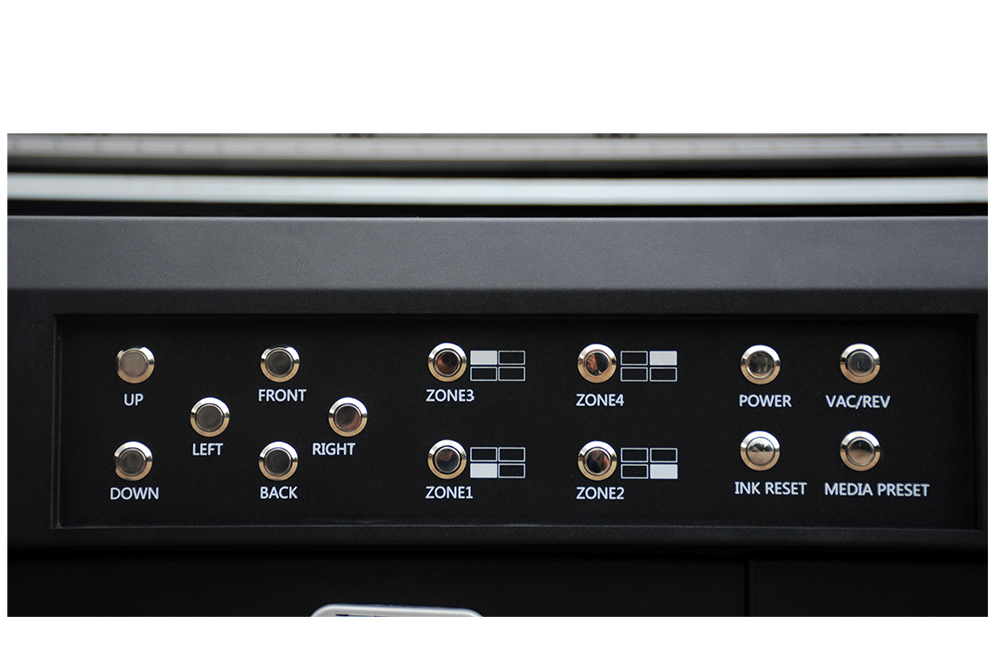UV Flatbed Printer: The Role of Printer Drivers
In the realm of digital printing technology, UV flatbed printers have emerged as a game-changer, revolutionizing the way we approach printing on a multitude of surfaces. From rigid materials like glass, metal, and ceramics to flexible substrates such as vinyl and fabric, these printers offer unparalleled versatility and precision. At the heart of this technological marvel lies a critical component that often goes unnoticed but plays an indispensable role: the printer driver.

Printer drivers are the unsung heroes of the digital printing world. They serve as the bridge between the computer and the printer, translating the digital instructions into a language that the printer can understand and execute. In the context of UV flatbed printers, the significance of printer drivers cannot be overstated. They are responsible for ensuring that the intricate designs and vibrant colors conceived on a computer screen are accurately reproduced on the chosen substrate.
To fully appreciate the role of printer drivers in UV flatbed printing, it is essential to understand the complex process that unfolds from the moment a print command is initiated until the final output is achieved. The journey begins with the creation of a digital file, typically using graphic design software. This file contains all the necessary information about the image or text to be printed, including color specifications, layout, and resolution.
Once the digital file is ready, it is sent to the computer connected to the UV flatbed printer. This is where the printer driver enters the scene. The driver’s primary function is to interpret the data within the digital file and convert it into a format that the printer’s hardware can process. This involves a series of intricate calculations and conversions, ensuring that every detail of the original design is preserved.
One of the key challenges in UV flatbed printing is the variability of substrates. Unlike traditional paper-based printing, where the surface is relatively uniform, UV flatbed printers must adapt to a wide range of textures, thicknesses, and material properties. Printer drivers are equipped with advanced algorithms that take these factors into account, adjusting the print settings accordingly. For instance, when printing on a rough surface like wood, the driver may increase the ink flow to ensure proper coverage and adhesion. Conversely, when printing on a smooth surface like glass, the driver may optimize the ink droplets’ size and placement to achieve a higher resolution.
In addition to substrate variability, UV flatbed printers must also contend with the unique characteristics of UV-curable inks. These inks undergo a chemical reaction when exposed to ultraviolet light, solidifying almost instantly and creating a durable, scratch-resistant finish. The printer driver plays a crucial role in controlling this process, determining the precise amount of UV light needed to cure the ink without overexposing it, which could lead to discoloration or cracking.
The color management capabilities of printer drivers are another vital aspect of UV flatbed printing. Achieving accurate color reproduction is essential, especially in applications where color fidelity is critical, such as fine art reproduction or product packaging. Printer drivers utilize complex color management systems (CMS) to ensure that the colors displayed on the computer screen match those printed on the substrate. This involves calibrating the printer, monitor, and software to a common color standard, ensuring consistency across different devices and environments.
Moreover, printer drivers facilitate advanced printing features that enhance the capabilities of UV flatbed printers. For example, they enable variable data printing, allowing for the personalization of each print with unique information such as names, numbers, or barcodes. This is particularly useful in industries like packaging, where each product may require a unique identifier.
Efficiency and productivity are also significantly influenced by printer drivers. Modern drivers are designed to optimize print speeds and reduce downtime. They do this by managing the printer’s resources effectively, such as ink usage and print head maintenance. Some drivers even include diagnostic tools that can detect and troubleshoot common issues, minimizing the need for manual intervention.
The integration of printer drivers with other software systems is another area where their importance becomes evident. In many printing environments, UV flatbed printers are part of a larger workflow that includes design, pre-press, and post-press processes. Printer drivers that support industry-standard file formats and communication protocols ensure seamless integration with these systems, streamlining the entire printing process.
As technology continues to evolve, so do printer drivers. Many modern drivers now incorporate artificial intelligence and machine learning algorithms to improve print quality and efficiency. These advanced features enable the driver to learn from previous print jobs, adapting and optimizing the printing process over time. For example, a driver might analyze the results of previous prints on a particular substrate and adjust the settings automatically to achieve better results in future prints.
In conclusion, the role of printer drivers in UV flatbed printing is multifaceted and indispensable. They are the unsung heroes that bridge the gap between digital creativity and physical output, ensuring that the intricate designs and vibrant colors conceived on a computer screen are faithfully reproduced on a wide range of substrates. From managing color accuracy and substrate variability to enabling advanced printing features and optimizing efficiency, printer drivers are the backbone of UV flatbed printing technology. As this technology continues to advance, the importance of robust, intelligent printer drivers will only grow, further solidifying their role as a critical component in the digital printing ecosystem.
